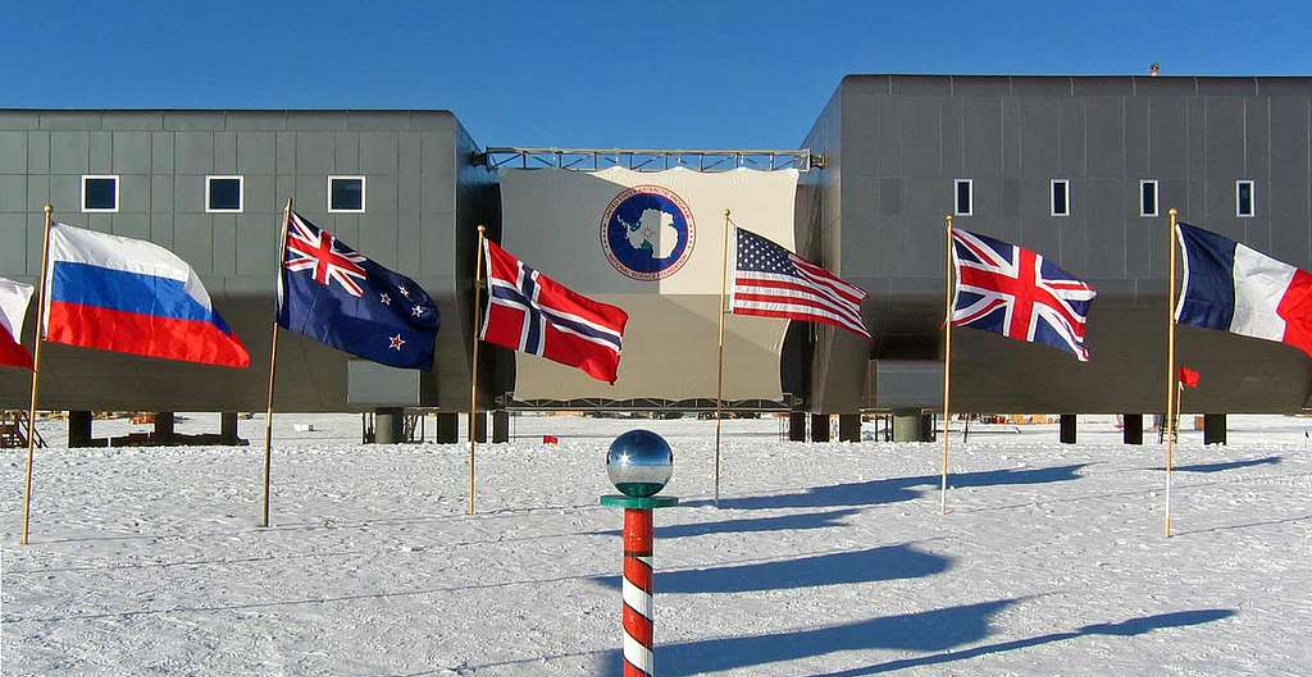Australia’s Antarctic presence—vital for science and climate security—has been overshadowed by other strategic priorities, leaving influence at risk. Without sustained investment and coordinated policy, Canberra risks ceding leadership in a region where geopolitical competition is rapidly intensifying.
As Australia navigates an increasingly volatile international landscape—characterised by strategic competition, climate instability, and evolving global governance—it has prioritised defence modernisation and energy transition. While initiatives such as AUKUS and green technology investment dominate the strategic narrative, one longstanding pillar of Australia’s international identity has receded from view. Amid these efforts to redefine Australia’s global posture, its southern frontier has quietly fallen off the radar: the Antarctic region.
Australia’s engagement with the polar region is more than symbolic. The country claims 42 percent of the continent, maintains three year-round research stations—Mawson, Davis, and Casey—and upholds a subantarctic presence on Macquarie Island. These facilities have played a vital role in advancing climate science, supporting environmental stewardship, and reinforcing Australia’s standing within the Antarctic Treaty System. Macquarie Island offers a crucial platform for monitoring the Southern Ocean’s health, bridging Australia’s environmental interests with its polar responsibilities.
Australia’s commitment to its Antarctic presence has been inconsistent. While Australia has occasionally increased funding—such as the AUD$290.5 million allocated in the 2024–25 budget—these investments have lacked continuity and long-term strategic planning. In 2023, for instance, the Australian Antarctic Division faced a 16 percent funding cut, and major infrastructure projects like the Davis Aerodrome were shelved. These fluctuations suggest that Antarctica is viewed as a secondary priority rather than a consistent pillar of national strategy, despite its growing importance.
Senate committees and expert reviews have called for deeper structural reform, including acquisition of a second resupply vessel, improved infrastructure at Davis and Casey stations, and enhanced inspection capabilities for foreign installations. Notably, the Senate Standing Committee on Environment and Communications, chaired by Senator Peter Whish-Wilson, explicitly recommended developing a business case for a second support ship to ensure scientific operations are not compromised by reliance on a single vessel. This reflects growing concern within Parliament that logistical weaknesses could undermine Australia’s credibility in Antarctic governance and science.
Despite these challenges, the southern polar region remains absent from Australia’s strategic and defence discourse. The 2024 National Defence Strategy did not mention the region, highlighting a broader lack of integration in national planning. This absence is especially striking given the rising interest in polar regions as spaces of strategic significance, where climate, science, and geopolitical competition increasingly intersect.
Meanwhile, other actors are advancing their interests. Russia, with decades of polar expertise, operates the world’s largest fleet of nuclear-powered icebreakers and maintains year-round Antarctic research stations. Though its primary focus lies in the Arctic, Moscow’s strategic posture and logistical capacity could be leveraged in the south, especially if global governance frameworks weaken. Its capacity to operate in extreme conditions, combined with a long-term investment strategy, sets a precedent Australia should not ignore.
China has also deepened its Antarctic engagement. It operates four research stations, is building a fifth on the Ross Sea, and deploys the Xue Long 2 icebreaker for year-round polar missions. According to a 2023 report by the Center for Strategic and International Studies (CSIS), China’s new base “could enhance Beijing’s ability to map the region and potentially support dual-use operations under the guise of scientific research.” Activities such as satellite tracking and undisclosed terrain surveys have further fuelled concerns about strategic intent. Unlike Australia’s cautious and often under-resourced approach, China views the continent as a long-term strategic asset.
Australia’s reputation as a leader in Antarctic environmental diplomacy—evident in its advocacy for marine protected areas and science-based governance—is at stake. Although the latest budget allocations mark progress, they fall short of a sustained, future-oriented vision. Australia must invest not only in infrastructure and logistics. It also needs to strengthen public engagement, build international coalitions, and better integrate Antarctic policy with its broader foreign policy strategy. Such a strategy could include expanding airborne survey capacity, enhancing scientific diplomacy through Antarctic forums, increasing Australia’s leadership in multilateral inspections, and promoting bilateral research partnerships to maintain influence in the region. Revitalising this leadership requires aligning scientific goals with strategic intent, ensuring that Australia is not merely a passive steward but an active shaper of the continent’s future. Beyond sovereignty and science, the Antarctic region holds practical relevance for Australia’s national interest. The continent represents Australia’s entire southern frontier, directly facing the Southern Ocean where its major population centres—including Melbourne, Adelaide, and Hobart—are most exposed to climatic and maritime influences. Data collected there directly informs climate models used to forecast extreme weather events across the mainland. Moreover, rising strategic interest in Southern Ocean routes and emerging pressure on natural resources underline the need to safeguard long-term access and stability. Australia cannot afford to treat the continent as disconnected from its domestic resilience.
The Antarctic Treaty System, which prohibits military activity and promotes scientific cooperation, has long underpinned stability on the continent. Australia has historically played a leading role in upholding its principles—advocating for conservation zones and compliance monitoring. However, as geopolitical tensions rise and treaty interpretations grow more contested, Canberra’s diplomatic engagement within these institutions must be revitalised to match evolving challenges.
The Arctic offers a cautionary tale. Once considered stable and apolitical, it has become a site of military buildup and resource competition. Antarctica, though protected by a treaty, could face similar pressures if left strategically unattended. Climate change, new technologies, and growing international interest are likely to evaluate the limits of the current governance regime sooner than expected.
A renewed Antarctic strategy is both a national interest and an international responsibility. Australia must ensure that its southern frontier remains a space for peace, science, and cooperation—and not one defined by strategic neglect or missed opportunity. To do so, it must move beyond reactive budgeting and symbolic presence, and toward an initiative-taking, integrated policy that recognises the southern continent as central to Australia’s strategic future.
Enzo Nicolás Cardone is an Argentine historian and postgraduate student currently based in Queensland, Australia. He holds a diploma in International Relations and teaches history with a focus on geopolitics and strategic affairs.
This article is published under a Creative Commons License and may be republished with attribution.





